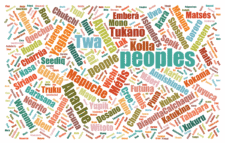Called Tribal Peoples, First Peoples, Native Peoples, and Indigenous Peoples, these original inhabitants call themselves by many names in their 4,000 + unique languages and constitute about 6.2 percent of the world’s population.

According to the International Labour Organization, there are approximately 476.6 million Indigenous people in the world, belonging to 5,000 different groups, in 90 countries worldwide. Indigenous people live in every region of the world, but about 70 percent live in Asia and the Pacific, followed by 16.3 percent in Africa, 11.5 percent in Latin America and the Caribbean, 1.6 percent in Northern America, and 0.1 percent in Europe and Central Asia.
There is no universally accepted definition for “Indigenous,” though there are characteristics that tend to be common among Indigenous Peoples:
- Indigenous People are distinct populations relative to the dominant post-colonial culture of their country. They are often minority populations within the current post-colonial nations states. In Bolivia and Guatemala Indigenous people make up more than half the population.
- Indigenous People usually have (or had) their own language, cultures, and traditions influenced by living relationships with their ancestral homelands. Today, Indigenous people speak some 4,000 languages.
- Indigenous People have distinctive cultural traditions that are still practiced.
- Indigenous People have (or had) their own land and territory, to which they are tied in myriad ways.
- Indigenous People self-identify as Indigenous.
Examples of Indigenous Peoples include the Inuit of the Arctic, the White Mountain Apache of Arizona, the Yanomami and the Tupi People of the Amazon, traditional pastoralists like the Maasai in East Africa, and tribal peoples like the Bontoc people of the mountainous region of the Philippines.